The first time I saw Neuschwanstein Castle, it didn’t feel real. The train had just pulled into Füssen, and even from a distance, its white towers peeked through the mist like something torn from the pages of a forgotten fairytale. No matter how many postcards you’ve seen or Instagram reels you’ve scrolled through, nothing truly prepares you for the moment this castle comes into view.
It was late October. Leaves flamed gold and amber across the hills, and a soft breeze carried the scent of pine and earth. As I walked up the winding path toward the castle, passing trees shedding their final colors, I remember thinking—this can’t be history. This is fantasy.
And yet, Neuschwanstein Castle is very much real. A monument to one man’s obsession with myths and music, a fortress built not for battle but for beauty. It’s been called many things: a mad king’s dream, a fairytale fortress, Disney’s muse. But labels never quite capture it. You have to see it. You have to feel the chill in the alpine air, hear your steps echo in the Throne Hall, and look out from Marienbrücke with your breath caught in your chest.
If you’ve ever wanted to step inside a story, this is the place.
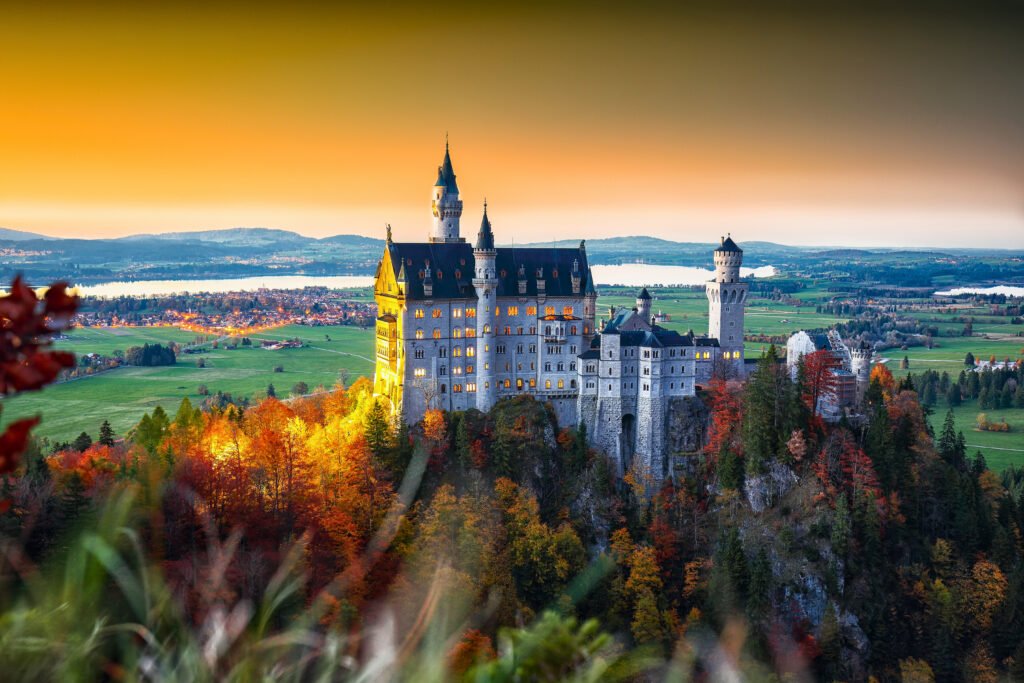

Quick Facts
📍 Location: Bavaria, Germany (near Füssen)
🏗️ Construction Year: Began in 1869 – Still unfinished (opened to public in 1886)
🏰 Architectural Style: Romanesque Revival with Gothic and Byzantine elements
🎭 Famous For: Inspiring Disney’s Cinderella Castle, King Ludwig II’s fantasy retreat
👑 Notable Resident: King Ludwig II of Bavaria (also known as the “Fairy Tale King”)
🏆 UNESCO Status: Yes, one of the Palaces of King Ludwig II of Bavaria that were designated in 2025
🌐 Website: www.neuschwanstein.de

The History of Neuschwanstein Castle
To understand Neuschwanstein, you have to step into the mind of a king who refused to live in the real world.
King Ludwig II of Bavaria wasn’t like other rulers of his time. He wasn’t obsessed with politics or power. He was, in many ways, a dreamer—deeply captivated by medieval tales, chivalric romances, and the sweeping operas of Richard Wagner. As a boy, he was raised at Hohenschwangau Castle, just down the hill from where Neuschwanstein would eventually rise. The murals there depicted epic legends—knights, dragons, doomed lovers—and Ludwig never really grew out of them.
By the time he commissioned Neuschwanstein in 1869, Ludwig was already retreating from the world. He envisioned a castle that would bring his fantasies to life: not a fortress for war, but a sanctuary for imagination. He personally sketched ideas and oversaw details that went far beyond what was typical of a monarch. Some called him eccentric. Others whispered “mad.”
Construction moved slowly. Ludwig poured personal funds into the project, demanding frequent changes and fantastical flourishes. He lived much of his final years alone, surrounded by murals of mythical scenes and hallways that echoed with silence. The castle was still incomplete when, in 1886, Ludwig was declared unfit to rule. Just days later, he was found dead under mysterious circumstances in Lake Starnberg, alongside his psychiatrist. The cause? Still debated. Drowning? Murder? Suicide? No one knows for sure.
What we do know is this: Ludwig never saw his masterpiece finished. And yet, the dream he built endures. Today, millions visit each year, walking through the halls he designed not for subjects, but for stories.
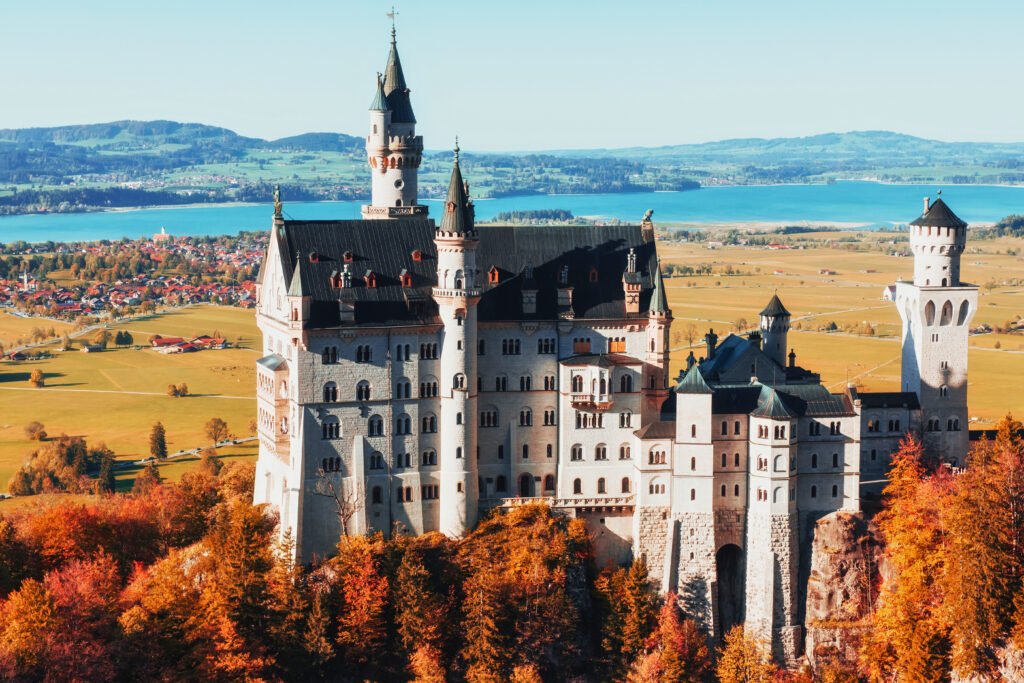

Architecture & Design: Where Fantasy Meets Function
Neuschwanstein isn’t just a castle—it’s a statement. Every spire, every arch, every painted ceiling tells you one thing loud and clear: this was built by someone who preferred dreams over duty.
At first glance, it looks medieval. But don’t be fooled—this is 19th-century theatrical architecture at its most ambitious. Ludwig II wasn’t trying to recreate the Middle Ages; he was reinventing them. The result? A blend of Romanesque revival with Gothic and Byzantine touches, all layered with the drama of Wagnerian opera.
The towers shoot up dramatically, silhouetted against the sky like something out of a storybook. You half expect a dragon to circle overhead. Inside, it gets even more immersive. The Throne Hall was designed to resemble a Byzantine basilica, though it never actually received its throne. Still, with its soaring columns and golden mosaics, you feel the intended grandeur.
One floor up is the Singer’s Hall, arguably the most beautiful room in the entire castle. Sunlight pours through tall windows, catching the vibrant murals that celebrate Germanic legends and Wagner’s music. It’s less a hall and more a cathedral to storytelling.
And then, quietly tucked behind the theatrics, come the surprises: running water, flushing toilets, a central heating system. For all its medieval flair, Neuschwanstein was wired with the latest technology of its time. Even the kitchen was cutting-edge.
That’s the paradox. Built to look like the past, powered by the future, and dreamed up by a man who belonged in neither.
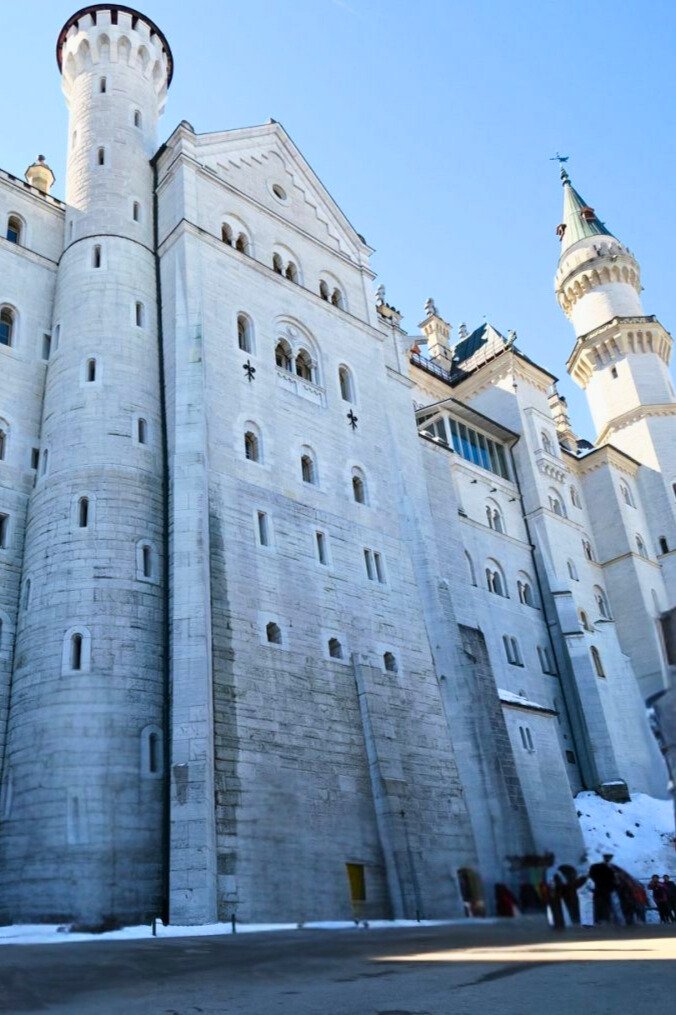

Legends & Mysteries: The Shadows Behind the Stones
Every fairytale has a darker side—and Neuschwanstein is no exception.
The most haunting thread tied to this castle is the fate of its creator. King Ludwig II, sometimes called the “Mad King,” poured his fortune and soul into this mountaintop dream. But just days after being declared mentally unfit to rule, he was found dead in the shallow waters of Lake Starnberg. The official report said drowning. But whispers told a different story.
Some believe it was suicide—grief over his forced removal from power. Others suspect murder, a political silence cloaked in scandal. No one really knows. What we do know is this: Ludwig never saw the castle completed. His dream ended before the final stones were set, and that alone adds a strange ache to the place.
Visitors and staff have reported odd things over the years. Chilly drafts in rooms with no open windows. Unexplained footsteps in the upper halls at night. A few claim to have seen a figure in royal blue, standing quietly at the windows, gazing out over the valley—as if waiting for something, or someone.
Locals still talk about the so-called “fairytale curse.” They say a castle built from loneliness and longing was never meant to bring peace. It was Ludwig’s escape, not his home. And in that sense, Neuschwanstein became exactly what he feared most: beautiful, admired, and empty.
Of course, most visitors don’t see ghosts. They see grandeur. But once you know the story behind those painted ceilings and golden halls, the silence feels a little heavier. And the legend lingers—just enough to give you chills on your walk back down the hill.


Best Time to Visit: A Castle for Every Season
There’s really no wrong time to see Neuschwanstein—but every season tells a different story.
Spring 🌸 arrives quietly in the Bavarian Alps. The snow begins to melt, revealing fresh green valleys below the castle cliffs. Birds return, flowers bloom, and the crowds haven’t quite rolled in yet. It’s the kind of season that whispers rather than shouts—perfect if you like to wander in peace, with mountain breezes and soft light for your photos.
Then comes summer ☀️, and with it, the buzz. This is peak season for a reason. The skies are usually clear, the forest trails are open, and the castle seems to glow against the bright blue backdrop. But fair warning: you won’t be alone. Tour buses, camera-clickers, and long lines are part of the summer experience. Still, there’s something festive about it—almost like visiting a theme park, except everything is real.
Autumn 🍂, in my opinion, might be the most cinematic. The forests blaze in red, orange, and gold, and the castle looks like it was dropped into the middle of a painting. The air turns crisp, the pace slows down, and the trails feel more intimate. If you love dramatic landscapes and fewer crowds, this is your golden ticket.
And then there’s winter ❄️. Snow settles over everything—trees, rooftops, even the turrets. Neuschwanstein becomes a true fairytale under frost. Fewer visitors make it up the hill this time of year, but those who do are rewarded with an almost surreal quiet. Just be mindful: paths can get icy, and access to viewpoints like Marienbrücke may be restricted depending on the weather.
If you're hoping for that magical photo, late spring or early autumn often hits the sweet spot. But honestly? Go when you can. This castle has a way of stealing the scene, no matter what month you visit.


How to Get There: Reaching the Dream
Getting to Neuschwanstein Castle isn’t difficult, but it does require a little planning—especially if you’re not familiar with rural Bavaria.
Most visitors start in Munich, which is well-connected by Germany’s efficient rail system. From Munich’s central station, take a train to Füssen. It’s about a two-hour ride, relaxed and scenic. Once you arrive in Füssen, walk just a few steps outside the station and hop on a bus headed to Hohenschwangau—the little village nestled below the castle. Buses 73 and 78 are the ones to look for. They run frequently and only take about ten minutes.
Driving is another option. The route from Munich to Hohenschwangau takes roughly 1.5 hours, and the roads are easy to follow. There's a decent-sized paid parking area near the village. From there, everything is clearly signposted.
Once you're in Hohenschwangau, the final stretch up to the castle can be tackled in a few ways:
- Walking takes around 30–40 minutes, depending on your pace. It’s uphill, but the path is paved and well-maintained. If you’re in good shape, it’s a nice way to build the anticipation.
- If you’d prefer to save your legs, a shuttle bus runs regularly and drops you near the famous Marienbrücke. From there, it’s a short downhill stroll to the castle gates.
- And then there’s the horse-drawn carriage—touristy, sure, but undeniably fun. It departs from the village and drops you a few minutes below the castle.
Some travelers also choose organized day tours from Munich. These usually include transportation, tickets, and sometimes a guide. They're convenient if you're not comfortable navigating trains or just want everything handled for you.
Either way, give yourself plenty of time. The journey is part of the experience—and watching those iconic towers rise from the mountainside as you approach is something you won’t forget.
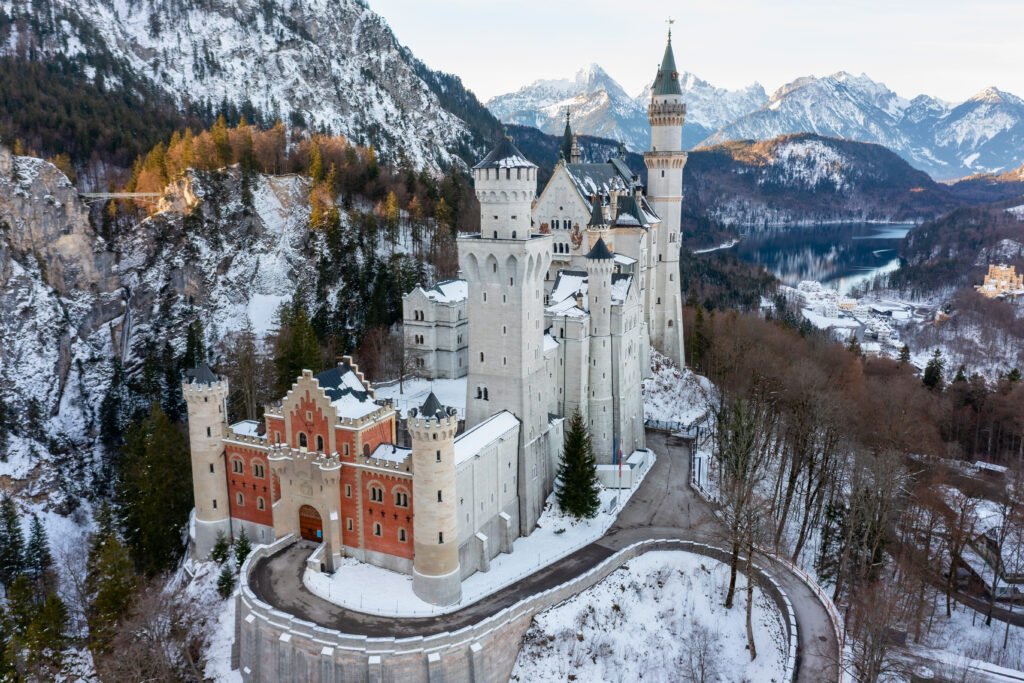

Entry Fees & Tours: What You Need to Know
Visiting Neuschwanstein isn’t something you can just wing on the day of. Trust me—I learned that the hard way. The castle attracts over a million visitors every year, and if you don’t book ahead, you’re likely to be left admiring it from the outside.
The only way to see the interior is through a guided tour. You can’t just roam around freely, which actually makes sense once you step inside. These tours are timed, organized, and surprisingly efficient. You’ll be part of a small group, led through richly decorated rooms that feel more like a theatrical set than a royal residence.
Tickets for adults usually cost around €23.50, though that can shift a bit depending on the season or if you're eligible for a discount. Kids under 18 generally get in for free when accompanied, and there are combination tickets if you're also planning to visit Hohenschwangau Castle or the Museum of the Bavarian Kings nearby.
You have to pick up your tickets in Hohenschwangau village—not at the castle itself. It’s a good idea to get there at least 90 minutes before your tour starts. That gives you enough time to grab your ticket, grab a snack, and make the 30–40 minute walk (or shuttle ride) up to the castle.
Also important:
- Photography inside is forbidden. Annoying for Instagram, but necessary for preservation.
- You won’t be allowed in if you miss your assigned tour time. They don’t make exceptions.
- Booking online in advance via the official website is the safest route. Walk-in spots are very limited.
So while it takes a little planning, it’s 100% worth it. Stepping into Ludwig’s fantasy world, even just for half an hour, is an experience that sticks with you long after you’ve left Bavaria.
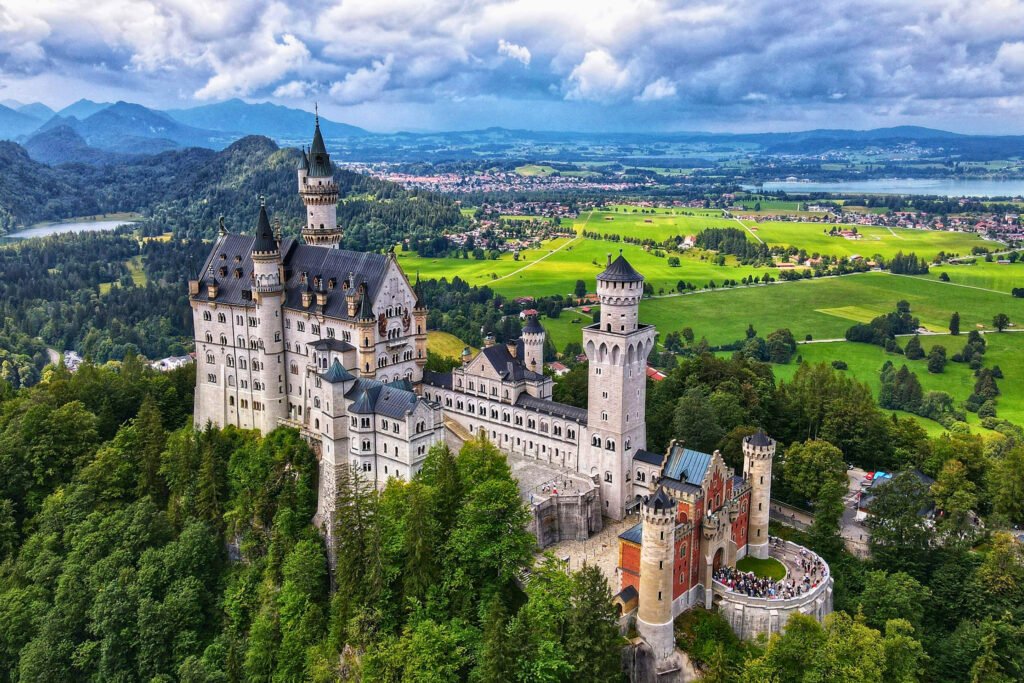

Travel Tips & Photo Spots: Make the Most of Your Visit
There’s no denying it—Neuschwanstein Castle is one of those rare places that actually looks better in person than in the photos. But let me share a few things I wish I’d known before my first visit that could help you avoid some rookie mistakes.
The walk up to the castle is no quick detour. It’s about a 30- to 40-minute hike from the ticket center in Hohenschwangau, and it’s mostly uphill. Not a hike per se, but enough of a climb to break a light sweat—especially in summer. If walking isn’t your thing, look for the shuttle bus (they usually drop you near Marienbrücke) or opt for a horse-drawn carriage ride. Yes, it’s touristy, but also kind of delightful if you’re embracing the whole fairytale thing.
Pack smart. Comfortable walking shoes are a must. I’ve seen folks in flip-flops or heels struggling on the cobbled paths—don’t be that person. Bring a light jacket even in summer, especially if you plan to stay into the evening. The air up there cools quickly.
Now, the big one: photos. Everyone wants that shot of Neuschwanstein—the one that looks like it belongs in a storybook. You’ll find it from Marienbrücke (Mary’s Bridge), which spans a gorge behind the castle. The view from there is hands down the best. That said, go early. Crowds start swarming by mid-morning, and in high season, the bridge can feel like a sardine can.
Inside the castle, photography is not allowed (yep, it’s strictly enforced), so take your time soaking it all in with your eyes. Trust me, the Throne Room and Singer’s Hall are better remembered with your full attention anyway.
A few more quick tips:
- You can’t bring large backpacks inside the castle.
- There’s food in the village, but options near the castle are slim—grab a snack or sandwich before heading uphill.
- If you’re visiting in winter, be cautious—the paths can be icy. But the views with snow-covered roofs? Unreal.
And don’t rush. Between the lake, the forest trails, and the mountain views, this isn’t just a quick photo stop. Give it time—it’s a place that deserves to be felt, not just seen.
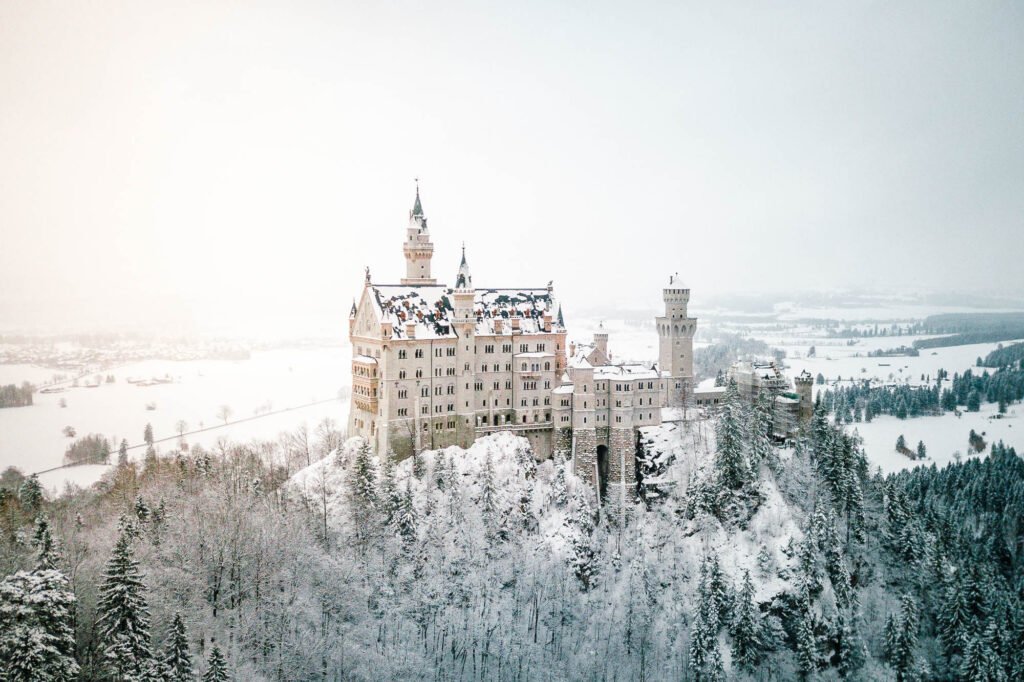

Nearby Attractions: Beyond the Castle Walls
It’s tempting to think the experience ends once you’ve seen Neuschwanstein. But if you turn your head even slightly, you’ll realize — the whole region around it is just as enchanting.
Start with Hohenschwangau Castle, only a short walk downhill. Painted a soft yellow and perched across from its more famous sibling, it was where Ludwig II spent much of his youth. While Neuschwanstein reflects his dream world, Hohenschwangau shows us the one he actually lived in. It’s smaller, yes — but there’s a quiet dignity to it. The two castles together feel like a dialogue between a boy’s upbringing and a king’s fantasy.
Then there’s Lake Alpsee, nestled in a green valley between steep slopes. On a calm day, the water looks like a mirror — mountains and sky rippling in the reflection. It’s the kind of place that makes you slow down without trying. Locals walk the loop trail. Some visitors just sit by the shore. I did both, and honestly, it was the perfect way to catch my breath after the castle crowds.
If you’re up for more height, Tegelberg Mountain offers sweeping alpine views. You can take a cable car straight to the top — no hiking boots required. But if you’re feeling adventurous, the trails are worth exploring. I saw hikers with poles and couples sipping coffee at the summit café. One guy launched himself into the sky on a paraglider. Not my thing, but it was fun to watch.
Hungry? Don’t rush off before trying something local. There’s usually a guesthouse or café within walking distance serving Weißwurst, Käsespätzle, and freshly baked pretzels. I still remember the mustard they served with the sausage — just sweet enough, with a hint of vinegar. One of those little details that stays with you.
Truth is, Neuschwanstein may draw the crowds, but it’s the surroundings that make you want to stay a while longer. If you have the time, give yourself permission to linger.
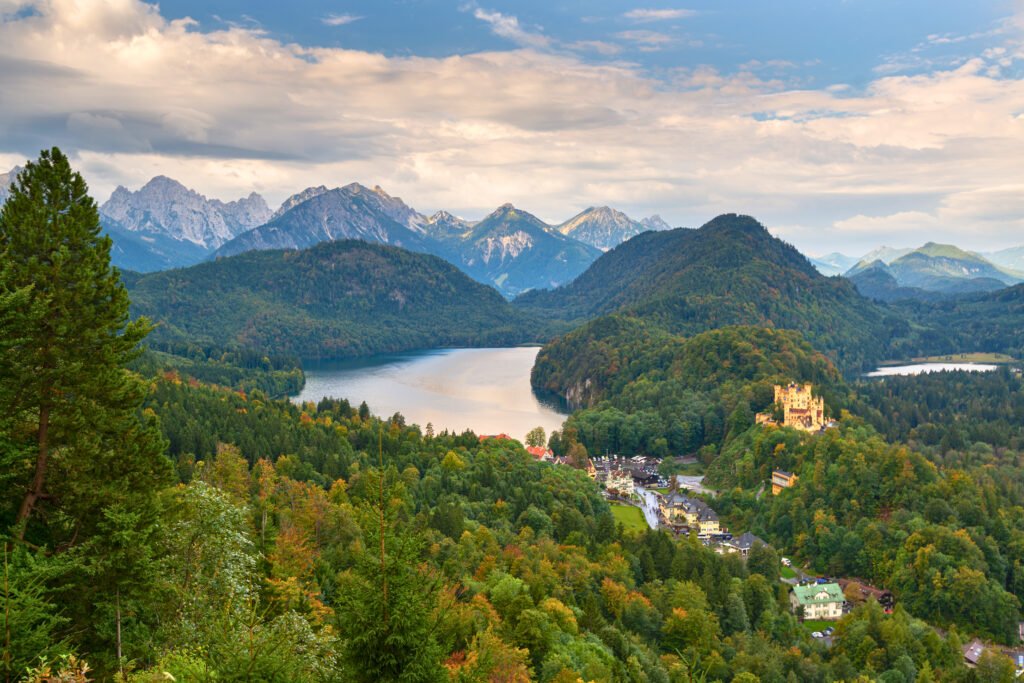

Final Thoughts: Why You Should Visit Neuschwanstein Castle
Not every destination feels like it stepped out of a storybook — but this one genuinely does.
The first time you see Neuschwanstein, whether it’s through a bus window or across the treetops from Marienbrücke, your breath catches. It’s not just the sheer beauty of the place — it’s the feeling that it shouldn’t exist. A castle this elaborate, built in the 19th century when castles were no longer needed… why?
That’s where the real magic begins.
It’s the story of a king who didn’t care what was practical. A man so drawn to fantasy and legend that he built a world around it — brick by brick, arch by arch. He wanted silence, art, solitude, and splendor. In many ways, he never got them.
But somehow, we do.
Standing in the shadow of those towers, you begin to understand why people come from around the world to see this castle. It’s not just about the views or the interior or even the history. It’s about wonder. That rare, quiet moment when you feel something shift inside you — and you remember what it’s like to believe in something larger than life.
So go.
Go because it’s beautiful. Go because it’s tragic. Go because you want to see what dreams look like when they’re carved in stone.
And if you already have? I hope it left a mark.
💬 Have you stood at the foot of Neuschwanstein? Tell us your story in the comments — or tag us in your photos @CastleQuestChronicles on Instagram and X. We’d love to share the magic with others still dreaming of their visit.
👉 And hey, don’t miss our complete guide to Edinburgh Castle—another fortress full of history and highland charm.
📸 If this article sparked your curiosity about the castles, follow along. We are also on Instagram, Pinterest, Facebook, and X. More castles (and more stories) are just around the bend. Explore all our castle adventures here!





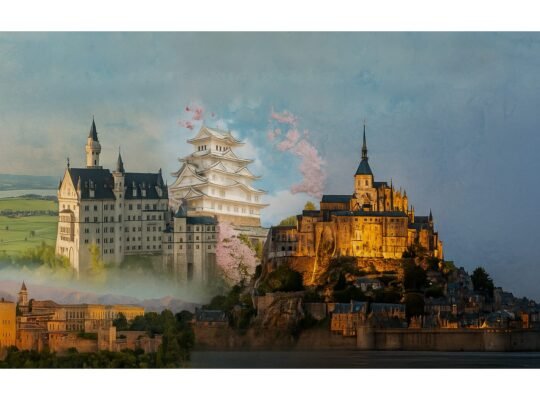
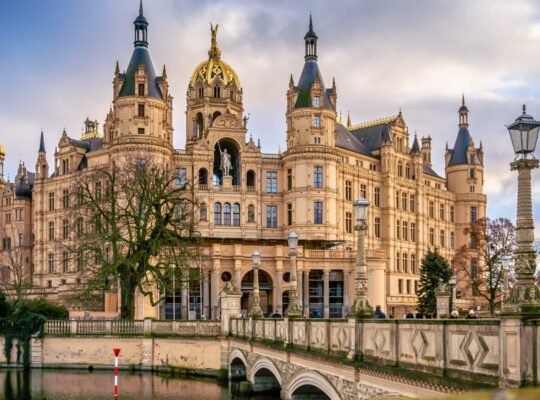
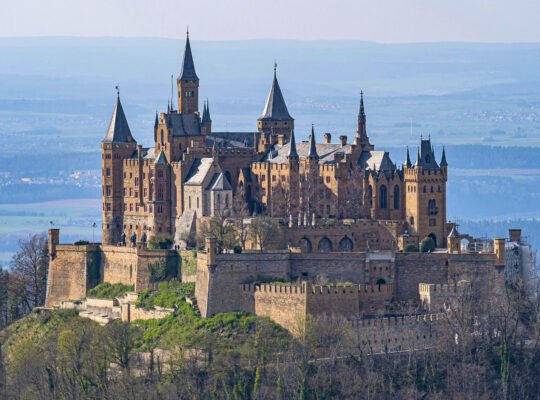
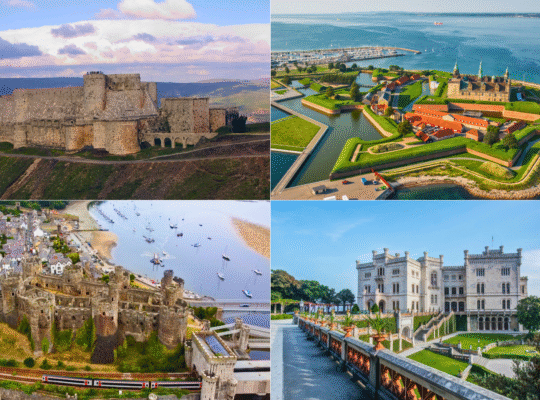
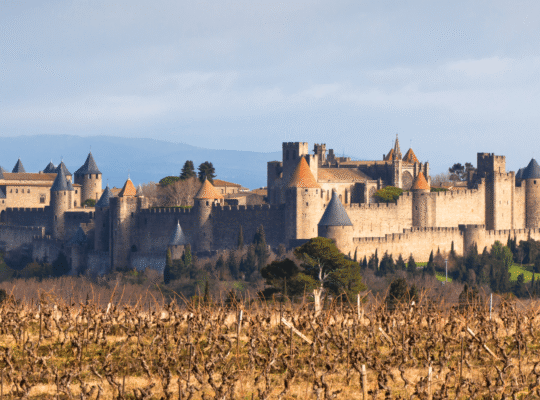
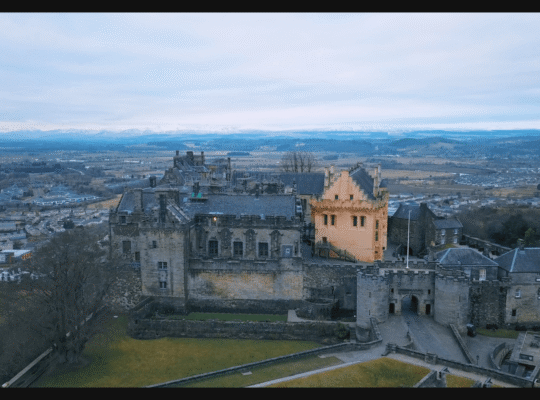
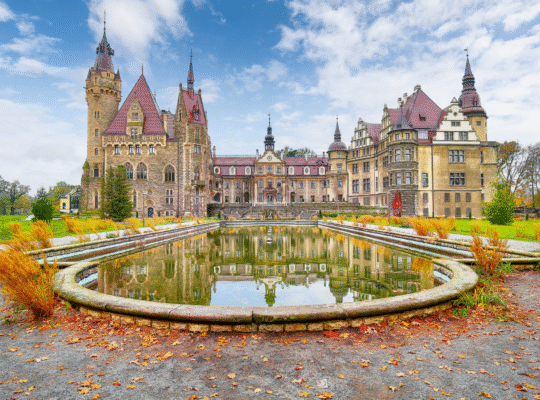
3 Comments